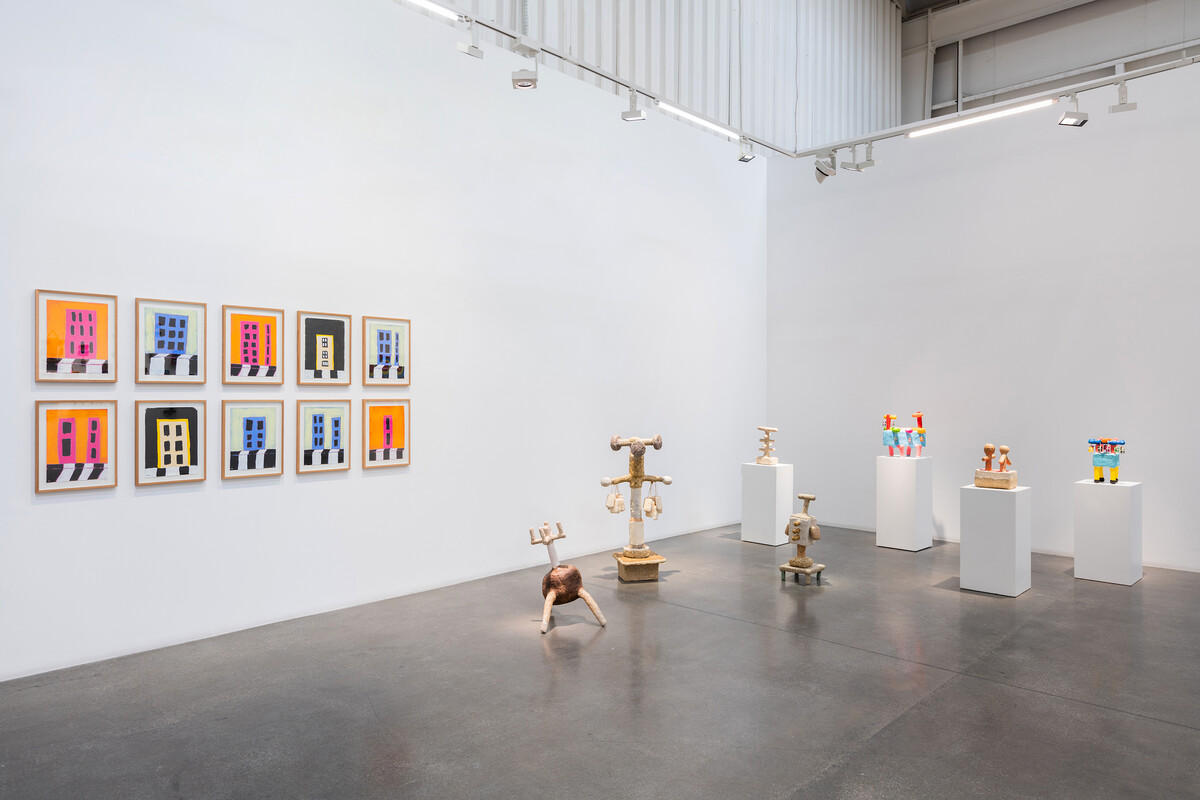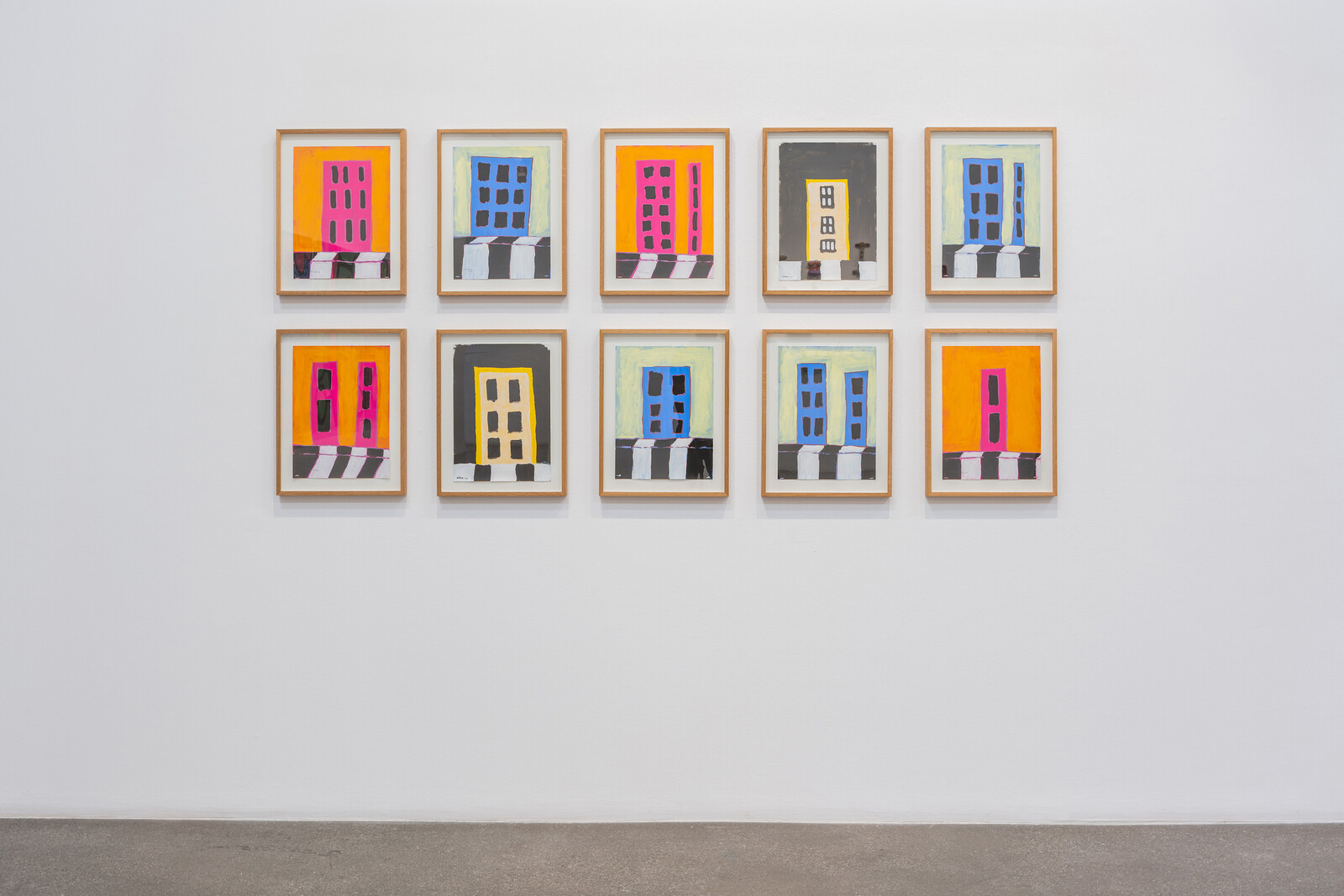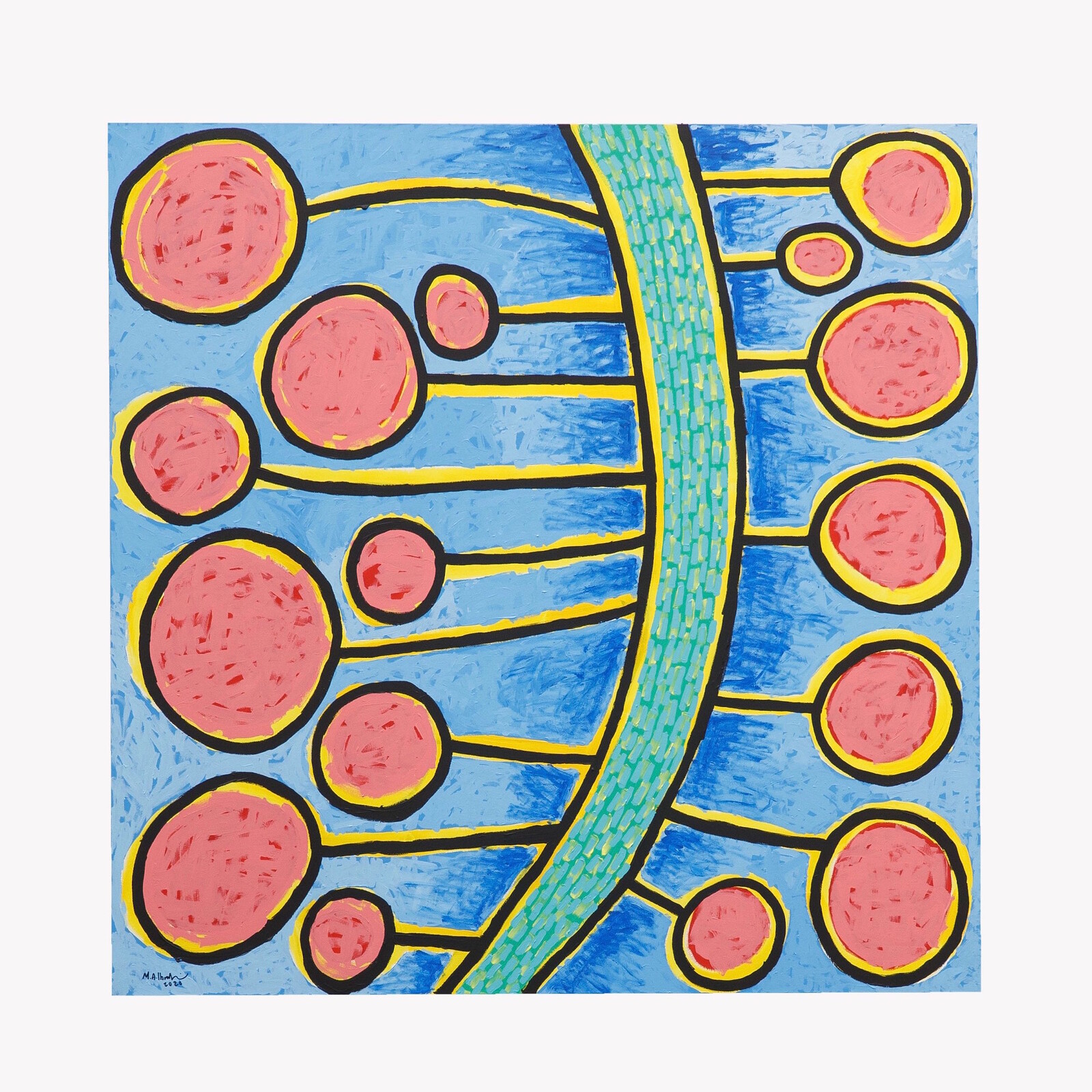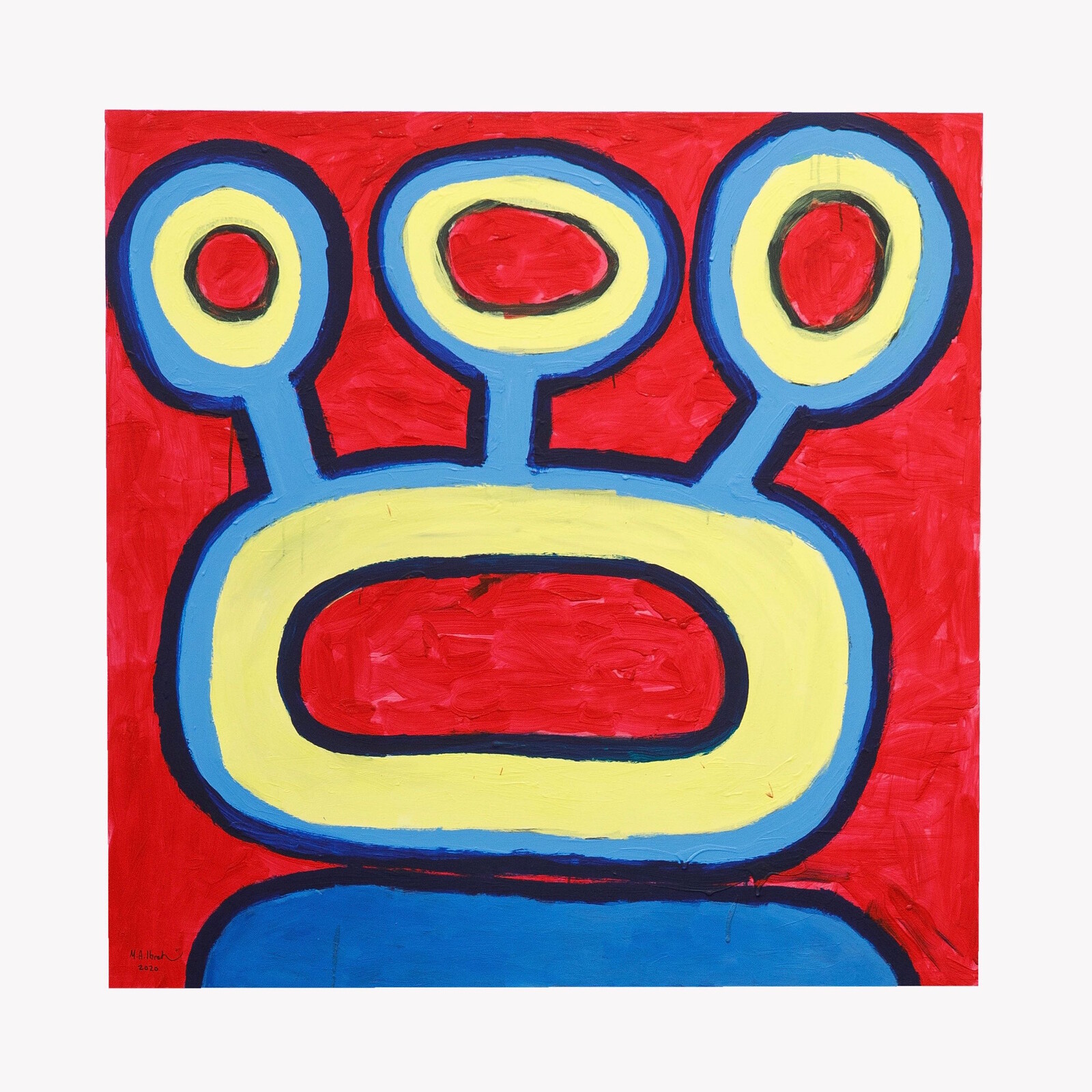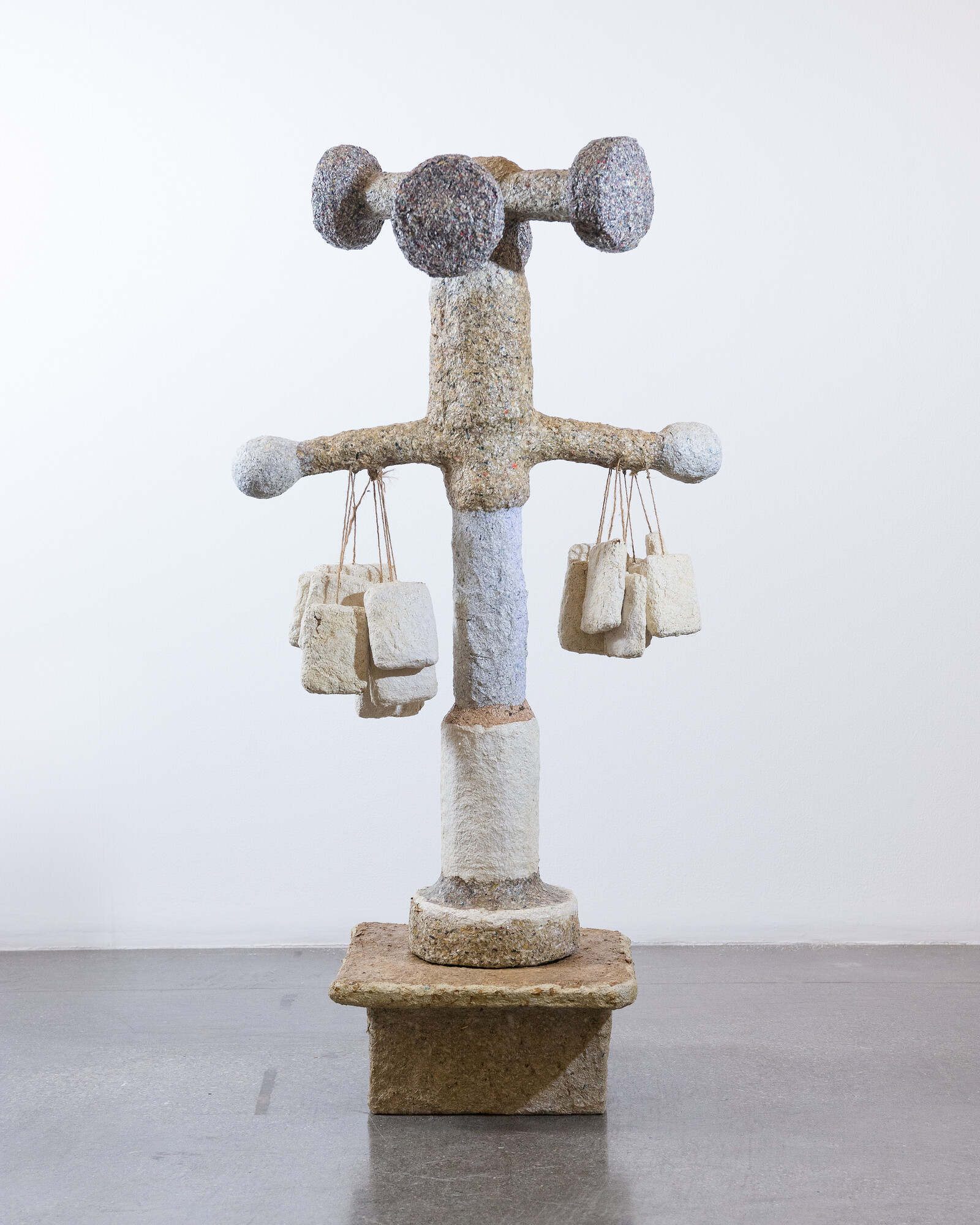September 19–November 12, 2020
When the United Arab Emirates began its slip-and-slide towards fully automated luxury neoliberalism in the 1970s and ’80s, artists responded in one of two ways. Some, like Hassan Sharif, addressed the twinned specters of rapid urbanization and hyperconsumerism by taking the influx of plasticky junk as raw materials for maximalist assemblages. Other members of the Emirati avant-garde—a group dubbed The Five, who formed the Flying House Collective and laid the groundwork for the country’s contemporary art scene—doubled down on their connections to the land and to the old ways of life that were in danger of disappearing.
Among those in the latter category is Mohamed Ahmed Ibrahim, who has always been an alchemist par excellence. The self-taught artist transmutes the rocks, clay, sand, and other natural materials gathered from the Hajar mountains that hug his hometown of Khor Fakkan into land art and, more recently, sculpture and painting. As is the case with all of The Five, his work features an emphasis on seriality and obsessive repetition, particularly in Hanne Darboven-esque ink drawings of tallied lines that accumulate in a frenzied intimation of the skyscrapers and urban sprawl encroaching on his beloved nature. But his visual language, which is synthesized from the prehistoric engravings found in local caves and the charcoal markings that water suppliers used to leave outside his door, is entirely his own.
Ibrahim regularly covers part of an exhibition wall with rhythmic black-and-white murals, sometimes taking over a smaller room or project space, to claustrophobic, cavelike effect. Here, the wall behind the gallery’s reception desk is crowded with small geometric-primitivist figures—or are they fishbones? A DNA-like chain curves across it. Everything seems to have sprouted a few too many arms and appendages, a phenomenon that extends to the many sculptures in the show. The mural is reminiscent of Ibrahim’s older paintings and the archaeological sites that dot the nearby desert. It encapsulates the tension at the heart of the UAE which pervades Ibrahim’s practice: that it is one of the oldest inhabited places in the world, with archaeological remains dating back an estimated 125,000 years, yet contains some of the newest, most cyberpunk of international cities.
Aside from a grid of small paintings of building facades, “Memory Drum” overwhelmingly features new pieces that Ibrahim made during lockdown, holed up in his Khor Fakkan studio, prior to his announcement in September as the UAE’s representative at the forthcoming Venice Biennale. Work titles are at once prosaic and misleading—Ibrahim prefers to leave them deliberately opaque—to disquieting effect. The show is dominated by five large paintings with titles like Green Boulevard and Red River (all works mentioned 2020) which invoke tree-lined avenues or the dried-up mountainous river beds known as wadis, but look more like sundews or another stickily carnivorous, probably poisonous plant. A similarly ambiguous pair of paintings, 3 Yellow Flowers and 3 Blue Flowers, suggests nothing so much as a three-eyed alien. In all these, loosely geometric shapes are darkly outlined in a way that equally evokes cell walls and microscopic slides of organic matter. Another suite of untitled small paintings, also hung in a grid, features runic mark-making in a pink and blue palette that unsettlingly suggests a party (and subsequent ecological catastrophe) in which the reveal is not gender but a sun, moon, and rising Zodiac sign.
Born in 1962, Ibrahim studied psychology at university, and retains an interest in the subject, particularly in the subconscious. This show’s title refers to the concept of muscle memory, which holds that sequences of motor skills are stored in the brain in a “memory drum.” It’s also a nod to the memory drum of early computing, a rotating, magnetic storage device that was commonly used as RAM until the 1960s. The exhibition text links this idea vaguely to what Ibrahim describes, rather over-determinedly, as the innate knowledge of a child, whose hardcoded creativity and freedom of expression has not yet been overwritten by societal programming. It’s an overcomplicated expression of the qualities of play and whimsy that suffuse Ibrahim’s prolific practice, which has retained a remarkable sense of sheer joy in making over more than thirty years.
Much of this affect is due to Ibrahim’s vivid, saturated palette, which is a response to growing up in Khor Fakkan. The small city on the Arabian Sea is surrounded on three sides by high mountains (now being mined and carted away to build cities on the UAE’s glitzy western coast). As a result, the sun never sets, but instead just disappears over the mountains, casting the city in a funny, gloomy light. The rugged landscape is barren of color, until a second look reveals varicolored stones or profusions of mountain flowers. An extended look at Ibrahim’s work similarly discloses unexpected slivers of color that are only visible from up close.
In recent years, Ibrahim has been making papier-mâché sculptures that resemble irradiated sheep, giraffes, and tardigrades on acid. The creatures seem to have had a field day at the local malls. Some, like the rainbow-hued Lady Going to a Party in a Hurry, have little packages tied with twine hanging off each their arms, and occasionally their tails too. They are displayed on pedestals in one corner of the gallery alongside a trio of larger, unpainted sculptures, whose subtle color blockings of grey, beige, and mushroom derive from the inclusion of coffee, tobacco, grass, and leaves. Dancer Contessa boasts two arms piled with bags and a head like a conjoined pair of hammerhead sharks; in a new direction for the artist, these large sculptures are humanoid, even robotic, yet beautiful in their restraint.
This denuded, natural palette extends to a number of small vertebrae-like sculptures which hang on one wall, alongside colorful trays filled with more vertebrae, and hanging objects that resemble baby mobiles or windchimes. Viewed alongside the mural at the gallery entrance, the overall effect is paleontological. Perhaps this is the memory drum: this fever dream of the country as it is now, fated to return to the desert in just another few short decades.
